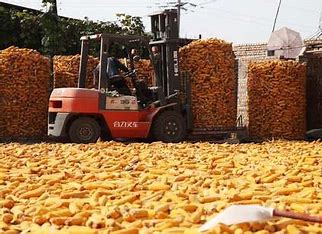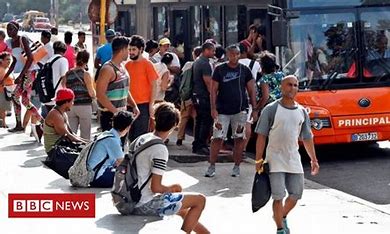Credit card deterioration has driven the worsening of individuals’ defaults
12/20/2022
Delinquency on revolving credit cards – when the client does not make full payment of the invoice – reached the level of 44.4% in October, which is the most recent data released by the Central Bank. This is the highest level in the records, which began in December 2011. Since April 2017, the customer can only use the revolving credit for 30 days. After this period, he is referred to other credit lines.
In February 2020, i.e., before the pandemic arrived in Brazil, the default on the revolving credit line was 35.5%. It fell to a low of 25.4% in April 2021, following a generalized drop in default rates due to measures adopted by the government and the payment breaks offered by banks, and has been rising almost uninterruptedly since then. Total credit card delinquency, which in addition to the revolving credit also includes installment payments, is currently at 8.2%, the highest level since September 2016, when Brazil was going through the worst recession in its history.
Credit card deterioration has driven the worsening of defaults of individuals, segment in which the index of delays in free credit is at 5.9%, the highest since January 2017. Many in the banking industry have been warning in recent quarters about a significant drop in asset quality in cards. One of the most vocal critics is Milton Maluhy Filho, CEO of Itaú Unibanco, who has commented several times that there has been an oversupply in this industry, where “in 30 minutes on the Internet you can get about six different cards.”
Itaú is the market leader in credit cards, in terms of market share in total payment volume (TPV). The bank has 41.2 million active cards, from a total of 190.838 million units in the country. Banco do Brasil (BB) has 51 million cards and Nubank has about 28.5 million. Santander and Bradesco do not disclose this number.
Not every default cycle is the same. In 2015/16, for example, the worsening was more pronounced in business entities, with many large companies affected by the unfolding of anti-corruption task force Car Wash. In 2012, the deterioration in asset quality was greater in individuals but pulled by automotive financing. Now, cards are the biggest problem spot.
“When the Selic went to 2% in 2020, banks had to migrate to riskier lines, and the revolving credit card was one of them,” commented Everton Gonçalves, superintendent of the economic advisory services of the Brazilian Association of Banks (ABBC). In this movement to expand the base, many banks went seeking clients with whom they had no previous relationship, which means a higher risk precisely because of the lack of knowledge about the credit profile of these borrowers. Now, almost all of them have returned to focus more on their own bases, and within them, on higher income clients.
/i.s3.glbimg.com/v1/AUTH_37554604729d4b2f9f3eb9ad8a691345/internal_photos/bs/2022/I/U/ZxQfpsSJGtdWiWBFcsSg/110416fitch028.jpg)
Claudio Gallina, Financial Institutions Senior Director da Fitch Ratings — Foto: Claudio Belli/Valor
For Claudio Gallina, senior officer of financial institutions at Fitch Ratings, the card industry is going through a challenging context, with rising interest rates and delinquency, in addition to an increase in competition, which has made the large banks run after new entrants in serving the lower classes. “The data from the Central Bank show that a few years ago people had a relationship with two financial institutions. Now there are five. The clients are more leveraged and salaries don’t rise at the same speed. So, any of those five can go unpaid,” he said.
Citi recently did a study that indicates that defaults have been worse with low-income clients, meaning that different institutions are affected to different degrees. Since the first quarter of 2021, the total payment volume (TPV) of the big four banks have been growing at more or less the same rate, with Santander deviating slightly, in line with what has been indicated by the bank’s management to reduce risk in the portfolio. However, when analyzing the use of the revolving credit card, BB and Bradesco rise much more than Itaú and Santander.
“We observed a lower expansion of the balances of high-income individuals, which can be explained by the greater financing needs of low-income individuals, leading to a greater number of installment purchases. If this is the case, the performances of Banco do Brasil and Bradesco can be partially explained by their greater exposure to the low-income segment,” added analyst Rafael Frade.
In the case of Itaú, Citi points out that portfolio growth comes more from clients using the credit card limits they already had, which would show a greater appetite for risk. “For the first time Itaú reduced its total credit card limits in the third quarter, with new limits being insufficient to offset reductions in existing limits,” he said.
In Nubank’s case, Citi points out that the bank has been gaining market share in terms of TPV, and is already in third place with 13.5%, behind only Itaú (29.3%) and Bradesco (14.9%), and ahead of BB (13.4%) and Santander (10.5%). However, in terms of the interest-bearing portfolio (i.e., revolving credit use), Nubank is still in fifth, with a much smaller share of 8.0%. “Given Nubank’s client profile (lower revenue than its competitors), one would expect a higher usage of revolving credit than other banks, but the data indicates a different profile than expected,” said Mr. Frade.
For him, Nubank has been very successful in exploiting the unbanked public and, despite showing a worsening in defaults recently, it has continued to grow strongly. “Of course, there have been adjustments, but they have been able to continue growing.” According to Citi, in the third quarter, Nubank’s defaults rose 0.6 percentage points, which can be considered positive given the sharp deterioration shown by the other banks in credit cards.
Other institutions that operate with lower classes have also seen a strong deceleration in the issuing of cards. Pan, which released 708,000 new cards in the third quarter of 2021, granted only 173,000 in the same period this year. At Inter, the 12-month growth in total cards used has slowed from 94% last year to 46% now.
If analysts and even some banks say that there was excess in the concession of credit cards, the Brazilian Association of Card Companies (Abecs) defends the sector. For Rogério Panca, Abecs’ president, the revolving credit card has the participation of only 3.1% of the families’ indebtedness. Moreover, only 26.4% of the total credit card portfolio of the financial system earns interest, i.e., it is of people who entered the revolving credit. “Out of ten people, more than seven use the card only as a means of payment, they don’t use credit itself. Does card default hurt? Yes, but if we look at it, it is a very small part of the families’ debt”, he said.
According to Mr. Panca, the outlook for 2023 is for a drop in card delinquency because issuers have done their homework and adjusted their concessions. “Many of our associates report that the new cards issued are already performing very well. Macroeconomic conditions are important, we have many uncertainties in the scenario, but we project an improvement in the [default] curves for 2023,” affirmed Mr. Panca.
He doesn’t believe that there was an exaggerated euphoria in the concession of cards and highlights that the instrument was very important in helping millions of people to become bankable. “This movement is impossible to go back. We can’t imagine that people will stop using cards and go back to going to a bank branch to withdraw cash to make their payments,” added Mr. Panca.
Although banks can reduce the concessions and adjust the limits of the cards, analysts say that this is not so easy to put into practice. First, because you can’t reduce the limit if the client is already using all of it, and second, if the person is already struggling, reducing the available credit can end up making the situation worse instead of better. “Bigger banks, with more products, may even be retracted for longer, but what about the smaller ones, which depend more on the card?”, said Mr. Gallina, with Fitch.
“A card is a different tool; one you can’t adjust much in origination. The bank offers a limit today, but it may take a year for the client to use it. It is something that will be solved gradually”, said Mr. Frade, with Citi.
To Mr. Gonçalves, with ABBC, the moment requires calm. “The default rate is going up, monetary policy affects credit, and we have to wait and see how the expected slowdown of the economy is going to be. I think the banks view the situation with caution, but not panic”, he said.
*By Álvaro Campos — São Paulo
Source: Valor International


/i.s3.glbimg.com/v1/AUTH_37554604729d4b2f9f3eb9ad8a691345/internal_photos/bs/2022/6/C/m91CXkQ56w5t1BXVXyQQ/19agr-100-borracha-b10-img01.jpg)

/i.s3.glbimg.com/v1/AUTH_37554604729d4b2f9f3eb9ad8a691345/internal_photos/bs/2022/V/K/GQrSpjSqWZTILaZrSHHg/100-fusao-b1-img02.jpg)


/i.s3.glbimg.com/v1/AUTH_37554604729d4b2f9f3eb9ad8a691345/internal_photos/bs/2022/B/k/FeRLrlRXCF1BJuD5UAug/151222infoprice01.jpg)

